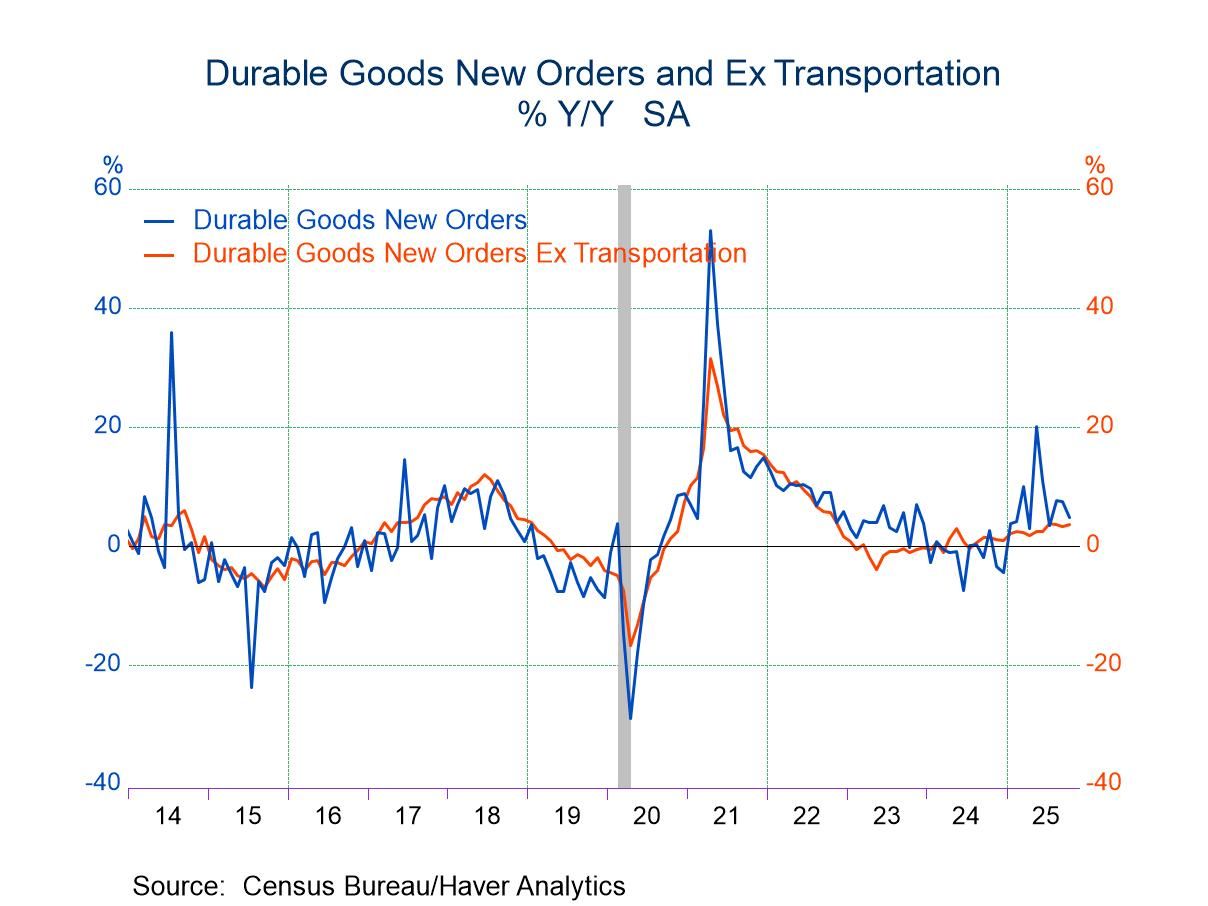U.S. Initial Unemployment Insurance Claims Dip
by:Tom Moeller
|in:Economy in Brief
Summary
- Decline reverses prior week’s gain.
- Continuing claims rise to six-week high.
- Insured unemployment rate remains steady.


Initial claims for unemployment insurance slipped to 210,000 (-7.9% y/y) in the week ended March 16 from 212,000 in the prior week, revised from 209,000. The Action Economics Forecast Survey expected 215,000 initial claims for last week. The four-week moving average of initial claims of 211,250 in the March 16 week compared to 208,750 in the prior period. This moving average has been fairly stable since early-October of last year. These figures cover the week during which March nonfarm payroll employment will be surveyed, and initial claims rose slightly from the February period.
Insured unemployment, also known as continued weeks claimed, totaled 1.807 million (7.6% y/y) in the week ended March 9 versus 1.803 million in the prior week, revised from 1.811 million. The four-week moving average in the March 9 week of 1.802 million compared to 1.797 million in the prior week. It was increased from a low of 1.766 million in the second week of January.
The insured rate of unemployment held steady at 1.2%, where it has been continuously since March 11, 2023. The insured unemployment rate represents the number of insured unemployment as a percent of covered employment.
Insured rates of unemployment vary by state and territory. In the week ended March 2, the highest rates were in New Jersey (2.88%), Rhode Island (2.68%), California (2.52%), Minnesota (2.46%) and Massachusetts (2.38%). The lowest rates were in Florida (0.38%), Kansas (0.41%), Virginia (0.42%), North Carolina (0.43%) and Alabama (0.45%). Rates in other major states include Illinois (2.16%), New York (2.00%), Pennsylvania (1.98%), Ohio (1.02%) and Texas (1.05%).
Data on weekly unemployment claims are from the Department of Labor itself, not the Bureau of Labor Statistics. They go back to 1967 and are contained in Haver’s WEEKLY database and summarized monthly in USECON. Data for individual states are in REGIONW back to December 1986. The expectations figure is from the Action Economics Forecast Survey in the AS1REPNA database.


Tom Moeller
AuthorMore in Author Profile »Prior to joining Haver Analytics in 2000, Mr. Moeller worked as the Economist at Chancellor Capital Management from 1985 to 1999. There, he developed comprehensive economic forecasts and interpreted economic data for equity and fixed income portfolio managers. Also at Chancellor, Mr. Moeller worked as an equity analyst and was responsible for researching and rating companies in the economically sensitive automobile and housing industries for investment in Chancellor’s equity portfolio. Prior to joining Chancellor, Mr. Moeller was an Economist at Citibank from 1979 to 1984. He also analyzed pricing behavior in the metals industry for the Council on Wage and Price Stability in Washington, D.C. In 1999, Mr. Moeller received the award for most accurate forecast from the Forecasters' Club of New York. From 1990 to 1992 he was President of the New York Association for Business Economists. Mr. Moeller earned an M.B.A. in Finance from Fordham University, where he graduated in 1987. He holds a Bachelor of Arts in Economics from George Washington University.






